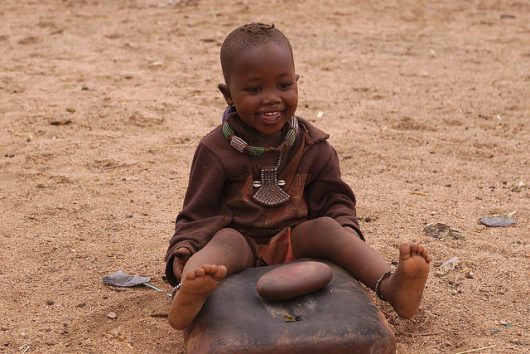Addressing the Causes of Poverty in Namibia
 As the thirty-fourth largest country in the world, Namibia is home just 2.4 million people. While there was an 11 percent decline in poverty from 2001 to 2011, almost 600,000 people were still living in poverty. According to data from 2015, about 26.9 percent of the total population lived in poverty and 16.9 percent had HIV/AIDS. While poverty is caused by a variety of factors, here are three of the causes of poverty in Namibia.
As the thirty-fourth largest country in the world, Namibia is home just 2.4 million people. While there was an 11 percent decline in poverty from 2001 to 2011, almost 600,000 people were still living in poverty. According to data from 2015, about 26.9 percent of the total population lived in poverty and 16.9 percent had HIV/AIDS. While poverty is caused by a variety of factors, here are three of the causes of poverty in Namibia.
- Agricultural and environmental factors
Seventy percent of the population depends on agriculture. The country has fourteen regions, with many rural, agricultural regions. The agricultural regions do not fare well and the people there have had to deal with severe droughts as it is very arid. At these times, people cannot grow the food that they need to sell and to eat. Hunger and poverty are connected in this specific instance, showing that other issues are byproducts of poverty.In 2008, SKILLSHARE International began working with local organizations to create the Sustainable Livelihoods Project for Rural Communities in Namibia. Reports show that in order to reduce poverty, the country must understand subsistence farming. Some experts see this as the key to finding a way to reduce poverty because it affects so many lives in urban and rural areas. - Socioeconomic factors
The gap between the rich and the poor is seen through the separation of the northern and southern regions of Namibia. Large amounts of wealth are concentrated in the hands of the few. The Gini coefficient for Namibia, which measures inequality, shows that inequality is still pretty high at 0.6 (perfect equality is 0).Seventy percent of personal income taxes come from the top 10 percent of the population. This small group at the top has a lot more opportunity than those at the bottom who struggle to farm the arid land. There is a divide between the rural and urban areas. A large amount of the population lives in rural areas, while the few in the urban areas have more opportunities for jobs and economic success.Another socioeconomic factor is that the poor have little access to public services, which is something on which the Namibian government is starting to focus more. With more access to education and sanitation, the poor will be better off.To fight the causes of poverty in Namibia, the government started to change its fiscal policies. According to the World Bank, the fiscal policies adopted by Namibia have been successful thus far in reducing poverty.The World Bank described the policy as “a progressive social benefits and tax system,” which basically means that it creates higher taxes for the rich in order to provide the poor with more social benefits. This money can be used for healthcare, education, and for transfers, which give the poor money to use for living. The next step for the fiscal policies is to promote job creation to help the poor find employment. - Health factors
Namibia’s maternal mortality is 200 deaths per 100,000 births, and its neonatal mortality is 19 deaths per 1,000 births. Nonprofit organizations like Synergy work on reducing maternal and infant mortality. They also want to increase youth employment and assist agricultural growth in Namibia.
Over the past twenty years, poverty is in decline in the country of Namibia. But, the situation is far from perfect and there remain many causes of poverty in Namibia. Through the continued work of the government and effective aid organizations, more of the vulnerable communities in Namibia will be able to find a path to prosperity.
– Emilia Beuger
Photo: Flickr
